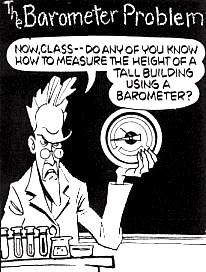Class 5: How do we measure?
Methodology of Scientific Research
Andrés Aravena, PhD
March 5, 2024
Measuring
Levels of Measurement
Psychologist Stanley Smith Stevens proposed a taxonomy of Levels of Measurement
- Nominal scale
- Ordinal scale
- Interval scale
- Ratio scale
Stevens, S.S. (1946). On the Theory of Scales of Measurement. Science, 103 2684, 677-80.
Nominal scale
“Giving names to things”
- Qualitative
- Assigning names to things
- Group similar things together
- Taxonomies
- Ontologies
- Mathematical operations: test for equality, test for set membership
- Central tendency: mode
Can you name examples?
Ordinal scale
- Semi qualitative, Rank
- Example: ‘completely agree’, ‘mostly agree’, ‘indifferent’, ‘mostly disagree’, ‘completely disagree’
- There is order, but intervals can be different
- Real differences between adjacent ranks may not be equal
- Mathematical operations: less-than, sort
- Central tendency: median
- And all the properties of Nominal
Can you give more examples?
Interval scale
- Difference between items, but not the ratio between them
- Temperature in the Celsius scale
- date measured from an arbitrary epoch (such as AD)
- location in Cartesian coordinates
- direction measured in degrees from north
- Mathematical operations: Plus, Minus, ratio of differences
- Central tendency: arithmetic mean, standard deviation
What is the meaning of “Twice the temperature”?
Ratio scale
- Has a meaningful (unique and non-arbitrary) zero value
- Most measurements in physical sciences and engineering
- mass, length, duration, plane angle, energy, and electric charge
- values have units of measurement
- Mathematical operations: multiplication, division
- Central tendency: geometric mean, harmonic mean, coefficient of variation
Examples?
Alternative: Mosteller and Tukey’s typology (1977)
- Names
- Grades (ordered labels like beginner, intermediate, advanced)
- Ranks (orders with 1 being the smallest or largest, 2 the next smallest or largest, and so on)
- Counted fractions (bound by 0 and 1)
- Counts (non-negative integers)
- Amounts (non-negative real numbers)
- Balances (any real number)
Chrisman’s typology (1998)
- Nominal
- Gradation of membership
- Ordinal
- Interval
- Log-interval
- Extensive ratio
- Cyclical ratio
- Derived ratio
- Counts
- Absolute
Summary of “Levels of Measurement”
| Incremental progress | Measure property | Mathematical operators | Advanced operations | Central tendency |
|---|---|---|---|---|
| Nominal | Classification, membership | =, ≠ | Grouping | Mode |
| Ordinal | Comparison, level | >, < | Sorting | Median |
| Interval | Difference, affinity | +, − | Yardstick | Mean, Deviation |
| Ratio | Magnitude, amount | ×, / | Ratio | Geometric mean, Coefficient of variation |
Wikipedia: Levels of Measurement
The Barometer Story
The first story I read in the University

In my first day of classes, the student’s union gave us a newspaper with this story in the first page:
The following concerns a question in a physics degree exam at the University of Copenhagen:
“How could you measure the height of a tall building, using a barometer?”
How to measure the height using a barometer?

One students gave the following answers
“You tie a long piece of string to the neck of the barometer, then lower the barometer from the roof to the ground.
The length of the string plus the length of the barometer will equal the height of the building.”
The professor said: “the answer is technically correct but does not demonstrate a knowledge of physics”
Second answer
“Take the barometer up to the roof, drop it over the edge, and measure the time it takes to reach the ground.
The height of the building can then be worked out from the formula \(h = gt^2/2\)”
The professor said: “the answer is technically correct but does not demonstrate a knowledge of physics”
Third answer
“If the sun is shining you could measure the height of the barometer, then set it on end and measure the length of its shadow.
Then you measure the length of the building’s shadow, and thereafter it is a simple matter of proportional arithmetic to work out the height.”
The professor said: “the answer is technically correct but does not demonstrate a knowledge of physics”
Forth answer
“But if you wanted to be highly scientific about it, you could tie a short piece of string to the barometer and swing it like a pendulum, first at ground level and then on the roof of the skyscraper.
The height is worked out by the difference in the gravitational restoring force \(T =2π\sqrt{l /g}\).”
The professor said: “the answer is technically correct but does not demonstrate a knowledge of physics”
Fifth answer
“Tying a piece of string to the barometer, which is as long as the height of the building, and swinging it like a pendulum, and from the swing period, calculate the pendulum length.”
The professor said: “the answer is technically correct but does not demonstrate a knowledge of physics”
Sixth answer
“Or if the skyscraper has an outside emergency staircase, it would be easier to walk up it and mark off the height of the skyscraper in barometer lengths, then add them up.”
The professor said: “the answer is technically correct but does not demonstrate a knowledge of physics”
Seventh answer
“I would go to the building superintendent and offer him a brand-new barometer if he will tell me the height of the building!”
The professor said: “the answer is technically correct but does not demonstrate a knowledge of physics”
The expected answer
Measuring the pressure difference between ground and roof and calculating the height difference
This is how planes measure altitude
Air pressure reduces when we go up
The story’s moral
The same attribute can be measured through different physical properties
Thinking “out of the box” enables measuring things that were not easy to measure before
What is the height of this building?
